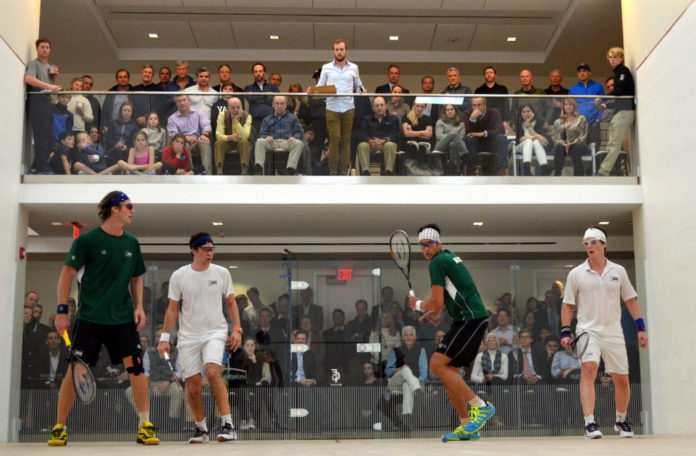By Manek Mathur, SDA World No. 1
“Everything is different—you are playing a new sport.” This is the most common answer I give people who ask what the difference is between singles and doubles. Here are a few things that stand out for me when trying to pick up the game.
Positioning
During a rally, you want to stand at least on the service line with the service circle splitting your two feet apart. The further up you are, the better you have to be at volleying the ball. You want to try and volley as much as you can. Moving up is also essential in protecting your front corner. It’s much easier for your partner to cover you in the back corner instead of the front.
Letting go
The best teams let high, hard balls travel through to their partner. Avoid giving up your central forward position. If someone hits it over you, hold your T position and allow your partner to take that ball. More often than not, they’re in a better position to hit it.
Over-hit
The ability to take your opponent’s position away is crucial to the outcome of the match. Forget about hitting the perfect lob and having the ball die in the back of the court. Think about the angles of your cross courts. Keep your opponents from volleying. Move them off their T position. This in turn takes the pressure off you when going short, as they have been pushed back
Ball Trajectory
One subtle difference between singles and doubles is the trajectory of the ball upon impact with the front wall. When trying to find the back corners on the doubles court, ensure the ball continues to rise on impact with the front wall. If you cut or slice the ball, it will force the hardball to dip upon impact with the front wall, which in turn leaves your cross courts short in the court.
Sides Practice
The best way to see quick progress is to play singles on the doubles court (“Sides”). There are many different variants, but as long as you split the court in half vertically and play a cross-court match, you are on your way to improvement. Playing “sides” help you focus on hitting the ball accurately and out of your opponent’s hot zones because if not, they can expose you extremely easily due to the amount of solo court coverage. It’s also extremely taxing on your cardiovascular endurance as well as your physical strength.
Off-Court Training
Due to the speed of the game and constant torque on the dominant side of your body, I find the doubles off-court regiment to be a lot more challenging than singles. Be sure to get into the gym and strengthen your non-dominant side as well. This is crucial to maintain equilibrium in your body and prevent compensation by the wrong muscle groups. The off-season is essential for me to get stronger. Spending time in the weight room gives me a good base to feel secure and to push my body when needed. I tend to work on a lot of whole body compound movements, but spend extra time with shoulder/hip and core strengthening through electrical muscle stimulation training and yoga.





